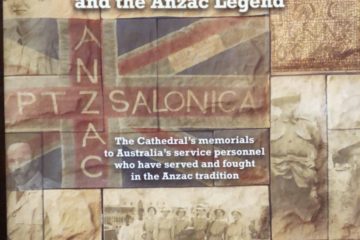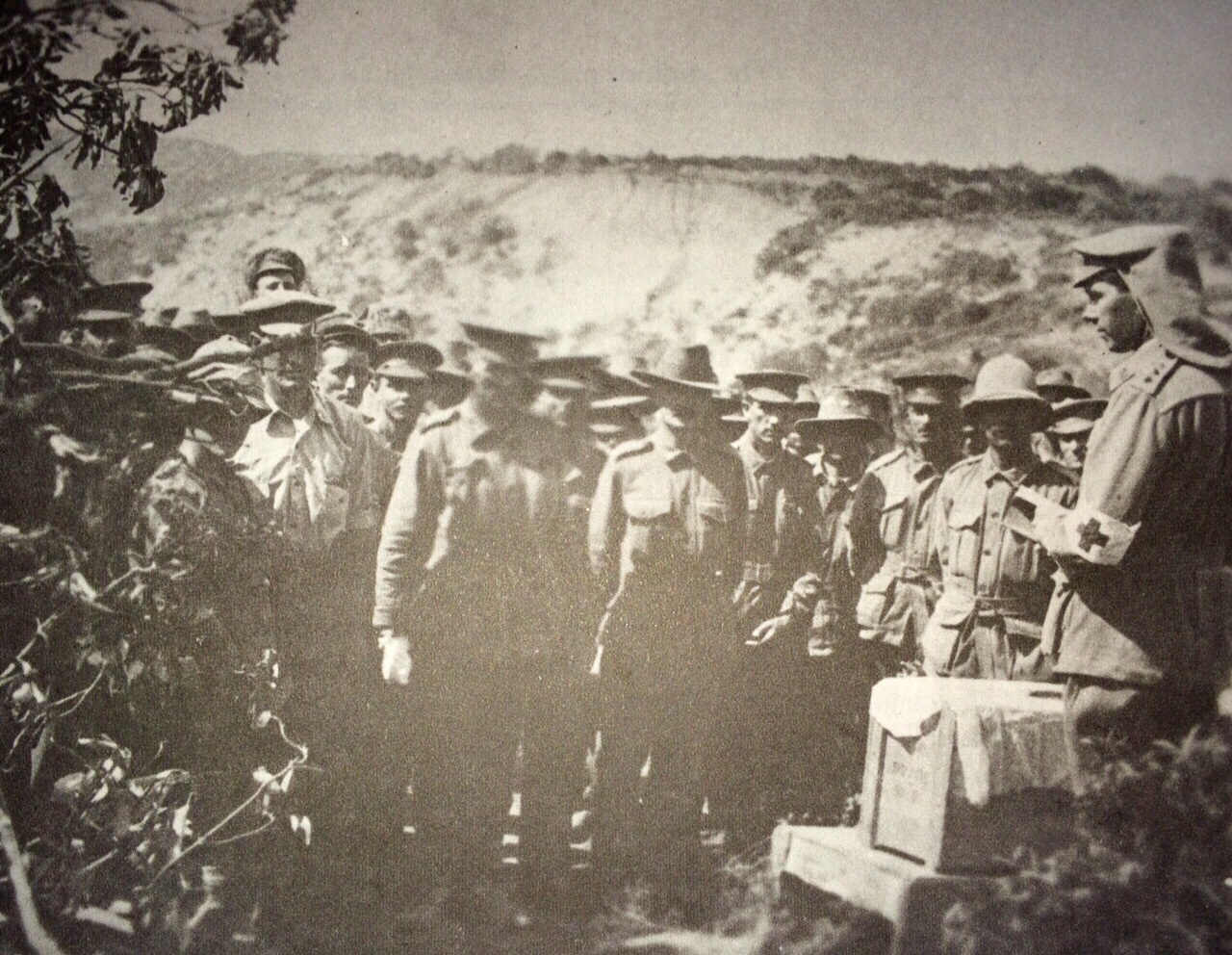Anzac Day at Toowong, 1930
AT THE SHRINE
OF REMEMBRANCE
Impressive Tribute
to Fallen Heroes
ADDRESS BY
CANON GARLAND
THAT the spirit of remembrance for Australia’s Fallen still is strong in the land for which they gave their lives was shown by the great gathering which assembled at The Cross of Sacrifice and The Stone of Remembrance in the Toowong cemetery this morning.
Despite the fact that church services also were being held at Toowong at the same hour the gathering was even greater this year than in previous years.
In his address Canon Garland [ David John Garland ] made scornful reference to writers who “libelled the troops in the hope of publishing a bestseller”.
From early morning — a procession of relatives and friends of fallen soldiers made its way to end in little groups in the cemetery, a striking picture was formed by the trams, one tram in particular being full of passengers carrying wreaths, transforming the tram into a huge floral display.
As the hour approached 9 o’clock the banks of wreaths rose steadily at The Cross of Sacrifice and The Stone of Remembrance.
A 9th Battalion banner was affixed to The Cross of Sacrifice and around the base of the sacred memorial numerous wreaths bore written messages of sorrowing.
AN INSPIRING SCENE.
The scene was inspiring as a procession formed at the gates of the cemetery and led by Canon Garland.
Rev. N. Bertram, and Mr. Harold Lowe M.M., carrying a cross, moved to The Stone of Remembrance.
“Rock of Ages” was sung, opening the sacred proceedings.
A little boy, dressed in the full Anzac uniform decorated with the medals won by his fallen father, stood beside Canon Garland.
The sight dimmed many eyes.
The Brisbane branch of the Returned Sailors’ and Soldiers’ League of Australia and the 9th Battalion were represented by Major Maddock, V.D.
Mr. H.A. Feather (president) and Mr. F.H. Richardson (secretary) re-presented the Soldiers’ Fathers’ Association.
Mr. W.C. Warne represented the Limbless Soldiers’ Association.
“The Last Post” was sounded by Buglers J. Barnes, B.M. Devlin and Jackson.
The Deputy Lord Mayor (Alderman A. Watson) and Mr. J.P. Maxwell, M.L.A., and many other prominent citizens were present.
The biggest proportion of the gathering consisted of women, and children were also there in large numbers.
CANON GARLAND’S ADDRESS.
In his address to the assemblage, Canon Garland traced the growth of the movement for the sacred observance of Anzac Day.
After referring with pleasure to the strength with which interest had been maintained in the celebration of the day, he remarked that there was really a soldiers’ plot in the Toowong cemetery where loved ones of the deceased gathered frequently in honour of their dead.
These were the men who had done their bit in the war, but had died after their return to Australia.
THE ORIGIN.
This led Canon Garland to speak of the origin of the observance of Anzac Day through the medium of sacred services at cemeteries where soldiers lay.
One Sunday on the Mount of Olives a battalion of Australian soldiers came upon a cemetery in which many of their comrades were buried.
Moved by an inspiration to pay a touching tribute to those fallen men all around, at a given signal from himself, bowed reverently en masse in prayer for their dead.
The proceedings were frequently repeated not only in that cemetery but in the cemetery at Cairo and other cemeteries.
In such services as these, Canon Garland said, the services they conducted each Anzac Day at the Toowong cemetery originated.
He hoped that the services would be continued in the spirit that had marked them each year since the first had been held.
Canon Garland pointed out that The Cross of Sacrifice and The Stone of Remembrance perpetuated the memory not only of those who were buried in Australia, but also of those who, having laid down their lives for the same noble cause, lay buried in war cemeteries the world over.
Canon Garland referred, with gratitude, to the large number who attended the services this morning.
Queensland, he said, had given the very first lead in such movements.
There had been a controversy as to whether it should be a day of gladness or of sadness, but he hoped the day was far distant when it would be given over just for the purpose of holding a holiday.
“My last thought today,” said Canon Garland, “and that is expressed without going into an argument, is in connection with a certain class of books now being published, in which the authors, with the object of obtaining ‘best sellers’, have slandered the fair fame of the fighting men.
“It did not begin yesterday, it began while our splendid men were going to the war and it was done by men who ought to have known better.
“They were all in the one class. I am not going to argue with them.
“They are contemptible.
“The right way to answer these slanders and libels is to remember our gallant men on Anzac Day; those who died for us, those who suffered for us, those who fought for us, and last but not least, the fathers and mothers who gave them for us.”
Many impressive hymns were sung and many more wreaths and floral tributes were laid on The Stone of Remembrance.
— from page 9 of “The Telegraph” (Brisbane) of 25 April 1930.



